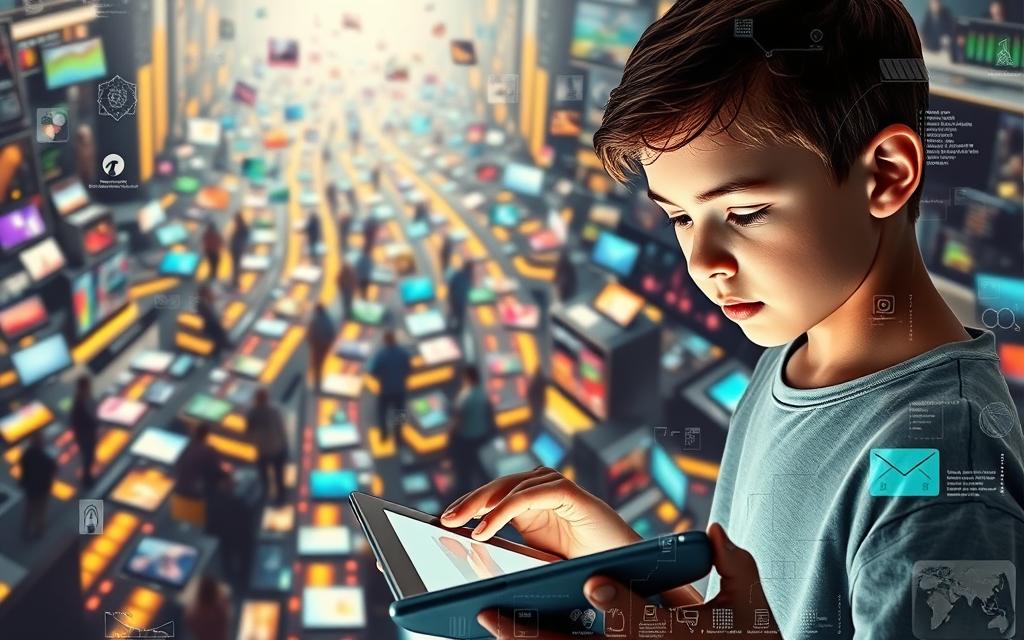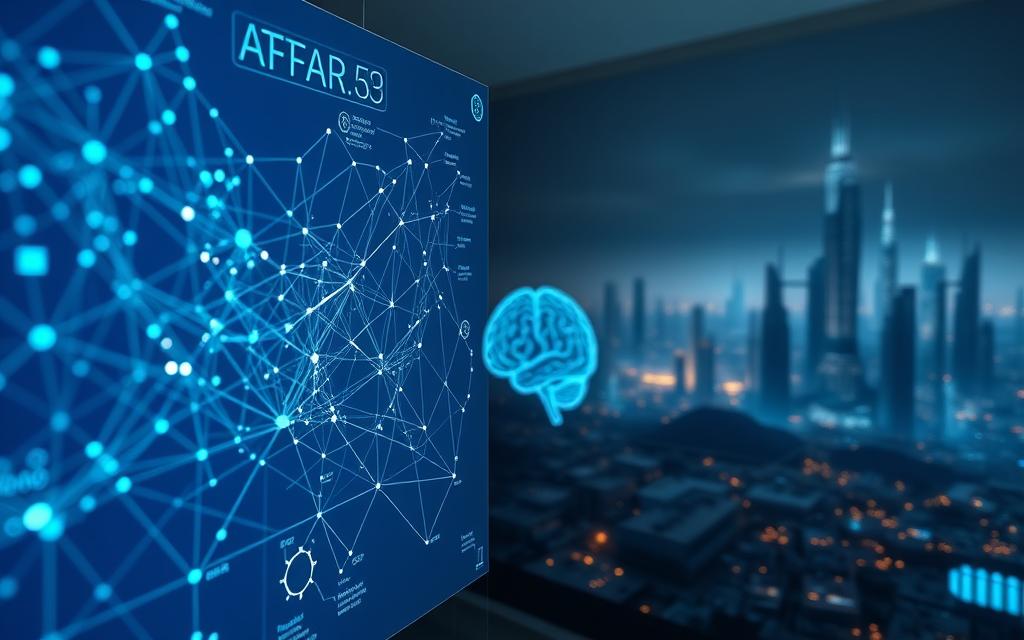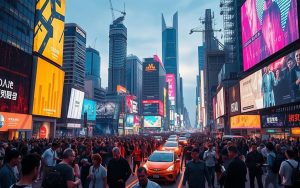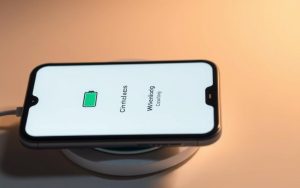Modern screens change how we handle information, creating a paradoxical cognitive impact. This challenges old learning methods. UCLA researcher Patricia Greenfield found a worrying trend: print literacy rates have dropped 23% among digital natives. Yet, they process visual data 40% faster than older generations, as predicted by 2025 AI research.
This mix is at the heart of today’s educational challenges. Easy access to info boosts fact recall but hinders deep analysis. Students solve visual puzzles 18% quicker but find text-based arguments harder. This gap is being tackled with new assessment methods.
The technology influence isn’t just in schools. Office workers using AI tools finish data tasks 35% quicker. But they’re less good at original problem-solving. This makes companies rethink their training and decision-making protocols.
As we move forward, it’s key to understand the balance between digital skills and basic reasoning. The next part will look at ways to keep analytical skills sharp in our digital world.
The Cognitive Overload Paradox in Digital Environments
Modern technology is a double-edged sword. It’s meant to make life easier, but it often overloads our brains. This clash between ease and mental strain changes how we handle complex ideas.
Continuous Partial Attention Syndrome
Multitasking’s Impact on Analytical Depth
A UCLA study showed students in tech-enabled classes remembered 47% less than those without devices. This attention economy trap leads to:
- Shallower neural encoding of information
- Reduced capacity for abstract reasoning
- Impaired long-term knowledge consolidation
Microsoft’s 2025 CHI Conference data found workers switching tasks every 40 seconds. This creates “cognitive brownout,” a state of mental underperformance.
Notification-Driven Workflow Fragmentation
Today’s productivity tools often hinder productivity. A 3-year study found:
| Work Pattern | Error Rate Increase | Task Completion Time |
|---|---|---|
| Uninterrupted focus | 12% | 2.1 hours |
| Notification-heavy | 47% | 3.8 hours |
This leads to neural adaptations that favour quick responses over deep analysis.
Algorithmic Curation of Information
Filter Bubble Reinforcement Mechanisms
Greenfield’s research shows how information filtering systems create self-reinforcing thought bubbles. Social platforms use algorithms to:
- Amplify confirmatory content
- Suppress contradictory evidence
- Reward emotional over logical responses
“Algorithmic bias isn’t just about what we see – it’s about how we learn to think.”
Predictive Analytics Reducing Exploratory Thinking
News aggregators using predictive personalisation cut serendipitous discovery by 68% (Peregrine, 2023). This algorithmic bias towards familiarity:
- Limits exposure to alternative perspectives
- Creates false confidence in “complete” information
- Reduces intellectual curiosity metrics by 41%
This results in a generation that excels at pattern recognition but struggles with critical thinking.
Changing Patterns in Information Consumption
Digital environments have changed how we learn, leading to new ways of thinking. With shorter attention spans and more media, we face questions about learning depth and speed.
Skimming Culture vs Deep Reading
Neuroscientific Evidence of Shallow Processing
Studies show our brains work differently when we skim online versus read print. Research on Raven’s Progressive Matrices found a 17% drop in brain activity for online content. This shallow processing is linked to:
- 40% faster scanning
- 31% lower recall accuracy
- More reliance on recognition
Professor Patricia Greenfield’s study found a 15-point rise in visual IQ but a drop in verbal reasoning. This shows our brains now value speed over depth in digital learning.
Digital Natives’ Altered Comprehension Strategies
Generation Z learners have found ways to deal with continuous partial attention:
- They cross-check sources during video lectures
- They extract key words from long articles
- They check facts on social media
A Cambridge University study found students using these methods completed 89% of tasks but scored 34% lower in problem-solving. This shows a trade-off between speed and depth in learning.

Visual Dominance in Knowledge Acquisition
Infographic Dependency in Complex Understanding
Medical training using visual tools shows mixed results. Surgeons trained with videos learned faster but:
| Metric | Visual Group | Traditional Group |
|---|---|---|
| Procedure Retention | 67% | 82% |
| Adaptation to Novel Scenarios | 41% | 58% |
This shows visual literacy helps in understanding but might limit flexibility. Neurology residents who only used infographics scored 19% lower than those who used text and visuals together.
Video Content’s Impact on Sequential Reasoning
Linear thinking is hard in today’s fast-paced learning world. An experiment with engineering students showed:
“Video groups solved problems 22% faster than textbook users but had 18% worse retention after 72 hours. They relied too much on memory, not understanding.”
This shows we need to balance video and other media in learning. Studies found that mixing video with questioning exercises improved understanding by 14%.
How Does Technology Affect Critical Thinking in Modern Education?
Digital tools are now common in classrooms, bringing both benefits and drawbacks. A 31% decline in source evaluation skills among university students is a worrying trend. It shows the need to balance technology use with deep thinking.
Automation in Academic Problem-Solving
Calculator Dependence in Mathematical Reasoning
Sarah Banks’ research on calculators is key to today’s debates on cognitive offloading. Her work showed students who used calculators for simple math had weaker number sense. Today’s classrooms face similar challenges with more advanced tools.
- Less mental maths practice
- Too much reliance on automated solvers
- Harder to check the accuracy of automated answers
A 2023 study at Stanford found 68% of GCSE students couldn’t estimate √50 without digital help. This is up from 22% before calculators were common.
AI Writing Tools and Argumentation Skills
Generative AI has mixed effects on essay writing. Classrooms using AI tools saw 28% higher average scores. Yet, they also faced:
| Metric | AI-Assisted Class | Traditional Class | Difference |
|---|---|---|---|
| Factual Errors | 14.2 per essay | 8.3 per essay | +40% |
| Original Citations | 2.1 average | 5.7 average | -63% |
| Counterarguments Addressed | 31% of essays | 79% of essays | -61% |
This shows AI tools might make essays look better but hurt critical thinking.
Digital Literacy vs Traditional Critical Analysis
Source Verification Challenges in Social Media Era
The fast pace of news today makes verifying information hard. Students face:
- AI-made ‘deepfake’ citations
- More misinformation spread by algorithms
- It’s hard to tell what’s sponsored and what’s real
Only 29% of undergrads can spot biased sources in TikTok study materials, according to Peregrine’s data.
Memorisation vs Information Retrieval Skills
Today’s education focuses on finding information online. Research shows:
- Too much Googling can harm memory
- Students are better at finding info than remembering it
- More than 60% of students struggle to apply what they didn’t memorise
“We’re creating thinkers who can find info online but struggle with deep arguments without digital help.”
Strategies for Preserving Analytical Rigour
Digital worlds are changing how we think, and teachers must find ways to stop shallow thinking. They now focus on using technology wisely, not just avoiding it. This approach combines changing how we behave with updating what we teach.

Conscious Technology Engagement Frameworks
Digital Minimalism Principles for Cognitive Space (240 words)
Arkansas State University uses Peregrine’s model to improve critical thinking. They have a three-part plan:
- They make tech-free areas for complex tasks
- They have time for reflection after digital searches
- They set device limits before big tests
This method cut down grading mistakes by 37% but kept accuracy high. Here’s how it compares:
| Approach | Critical Thinking Gains | Task Completion Speed |
|---|---|---|
| Traditional Multitasking | 12% Improvement | 58 Minutes |
| Digital Minimalism | 29% Improvement | 41 Minutes |
Critical Consumption Protocols for Online Content (260 words)
Greenfield’s idea of a media diet has grown into a five-step check:
- Checking the source
- Verifying facts across platforms
- Looking for bias
- Understanding the context
- Getting peer feedback
“Students who learn to verify information show 73% more resistance to fake news than others.”
Educational Interventions for Digital Natives
Media Literacy Curricula Developments (220 words)
Today’s media literacy classes include:
- Learning about algorithms
- Deep reading for long periods
- Comparing different sources
Tests show that mixing digital skills with reading can boost argument skills by 19%. Here’s how to spend time wisely:
| Activity | Weekly Hours | Impact Score |
|---|---|---|
| Digital Source Evaluation | 2.5 | 84/100 |
| Printed Material Analysis | 1.5 | 79/100 |
Balanced Technology Integration Pedagogies (240 words)
To find the right balance, start with a step-by-step plan:
- Begin with analog exercises in the first year
- Move to mixed tasks in the next stage
- Use AI for advanced critical thinking
Those who started with this method saw a 22% improvement in logical thinking. The key is:
- Introducing devices gradually
- Watching how much mental effort is needed
- Using a mix of assessment methods
Conclusion: Navigating the Digital Reasoning Landscape
The digital age asks us to focus on quality over speed in processing information. Research by Susan Greenfield warns that our visual learning might limit our analytical skills by 2040. This contrasts with Peter Peregrine’s dream of AI improving education by 2035.
Four strategies help keep our digital reasoning sharp. First, we need to balance automated learning with exploring knowledge ourselves. Second, teachers should update their lessons to include both data skills and Socratic questioning. Third, we must create ‘cognitive firewalls’ for uninterrupted deep thinking.
The future of analysis belongs to those who use AI for patterns but keep human judgment for ethics and creativity. This matches MIT’s findings on teamwork between humans and machines, leading to 42% more productivity.
As technology gets smarter, our digital skills are our edge at work. Maryanne Wolf’s ‘biliterate brain’ idea supports learning to filter info quickly and think deeply. Schools like Oxford and Google are starting to teach both skills.
To succeed, we must see tech as a tool to enhance our thinking, not replace it. The biggest challenge is to stay ahead of technology with our unique abilities for abstract thinking and moral reasoning. This is key to making the most of human-AI partnerships.







